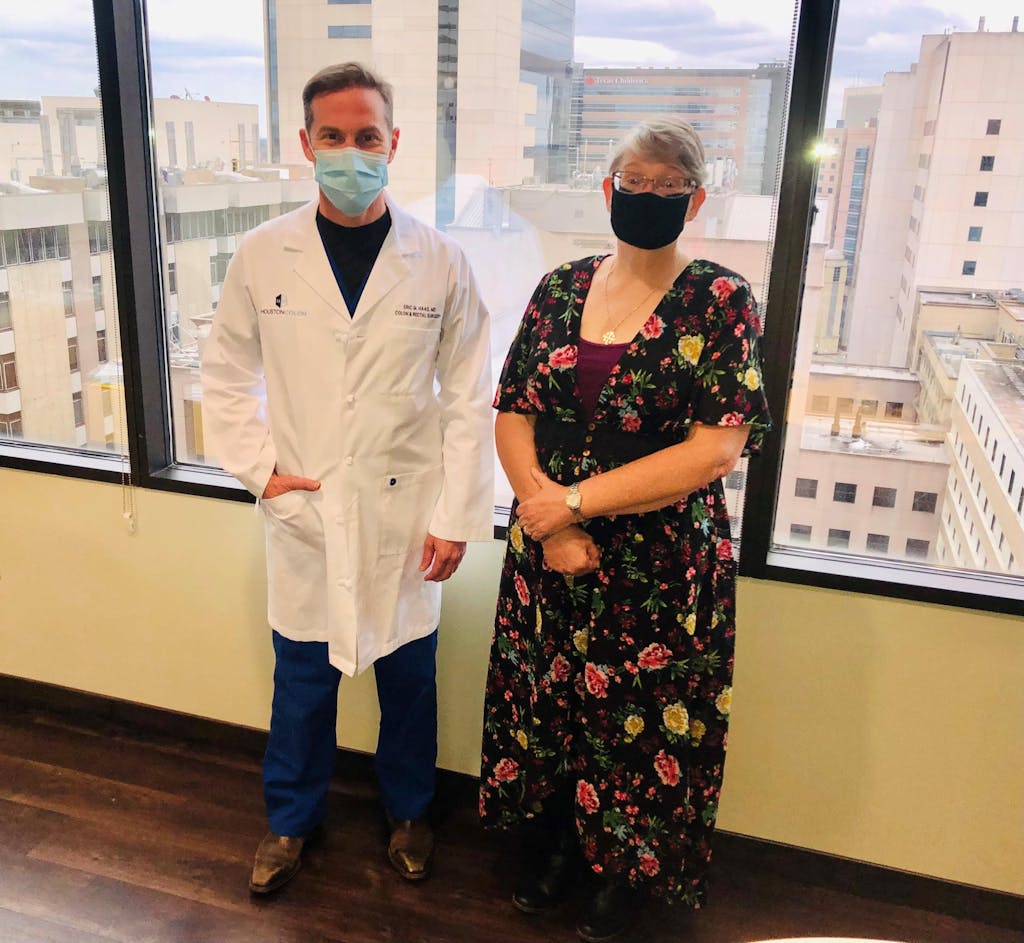Colorectal cancer is the third most common cancer diagnosed in both men and women in the United States, according to the American Cancer Society (ACS).
In most cases, colorectal cancer is diagnosed upon initial exam and biopsy, but for Yvonne Vives, a mother of four and Montgomery county resident, her journey was a long one.
Yvonne didn’t notice the signs that something was wrong immediately, but over time, she started to see abrupt symptoms repeatedly, even when she made changes to her daily eating habits.
“I’ve had symptoms for fifteen years,” she says. “I thought an energy drink that I would sip on during lunch while working was causing my symptoms, but my symptoms didn’t stop.”
While traveling with her sister, she noticed her symptoms started to take a turn for the worst and experienced abrupt gastro-intestinal issues three to four times a day. Her sister suggested that she should make a doctor’s appointment for a complete physical.
“My symptoms reminded me of my father’s symptoms when he had esophageal cancer and that’s what alarmed me,” she says.
Yvonne’s colonoscopy revealed two polyps that were found and removed. A large tumor was also discovered during the colonoscopy but was too extensive to remove without additional surgery. She was referred to Eric Haas, M.D., a colon and rectum surgeon at HCA Houston Healthcare Medical Center, who helped develop a new, minimally invasive surgical procedure called the Natural Orifice IntraCorporeal Anastomosis with Extraction of specimen (NICE) procedure.

“I was diagnosed with a fatty liver during this process and that was more devastating than the tumor was at the time,” she says.
The NICE procedure is the first refined robotic-assisted surgical procedure that uses the body’s natural orifices to gain access to remove cancer.
“The NICE procedure allows us to go in through the body using a natural orifice and remove the tumor without making a large incision that requires extended healing, and it prevents large scarring and incisions so patients can heal without taking narcotics,” says Haas.
Days after surgery, Yvonne noticed she was still able to perform daily activities without any over-the-counter pain medications and was healing comfortably at home.
“The only pain I felt was the day after surgery, when traveling home due to all the potholes on the road,” she says. “It took a few days to recover, but I was never in pain after surgery.”
While recovery was going smoothly, Yvonne’s tumor had come back from testing and she was informed that it did in fact contain cancerous cells. She then needed to complete chemotherapy due to finding additional malignancies on surrounding lymph nodes, but her spirit remained unwavered.
“I didn’t know I had cancer,” she says, “But I tell people all the time—I had cancer, but cancer didn’t have me.”
Yvonne started a 12-week chemotherapy course over a 6-month period and has received two infusions so far, with plans to complete the entire course in July as precaution.
“I wish I had done something sooner,” she says. “I feel very lucky because I lost an uncle to cancer, my father to esophageal cancer, a cousin to pancreatic cancer, and another cousin to leukemia—so I want to make sure my children take precautionary measures as well.”
The ACS recommends people at risk of colorectal cancer start regular screenings at age 45. Colorectal cancer signs and symptoms include changes in bowel habits, cramping or abdominal pain, and fatigue.






